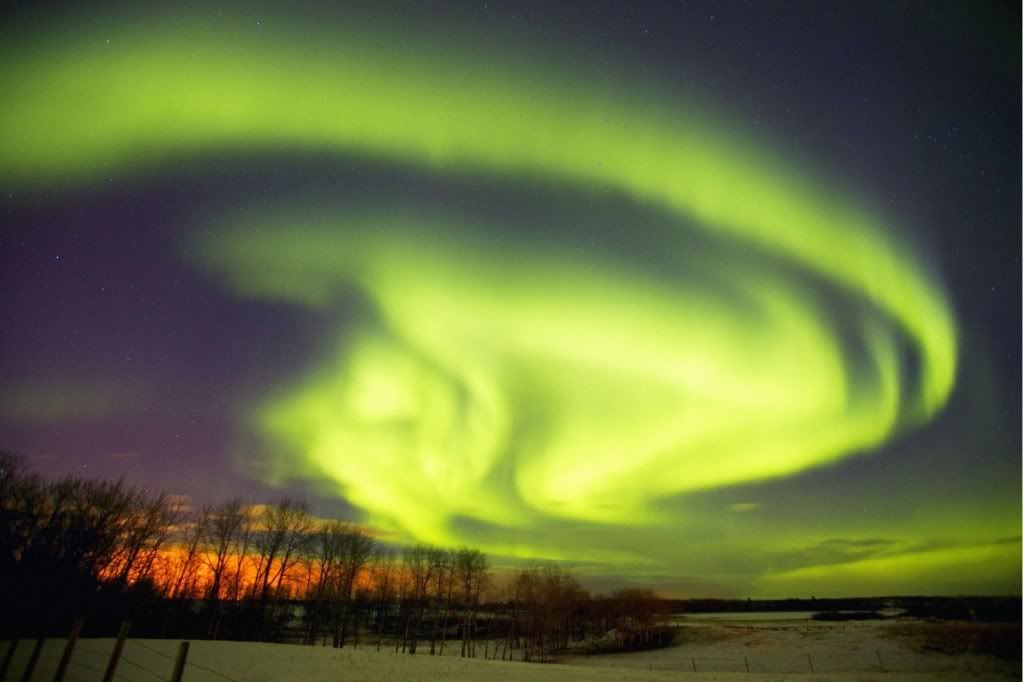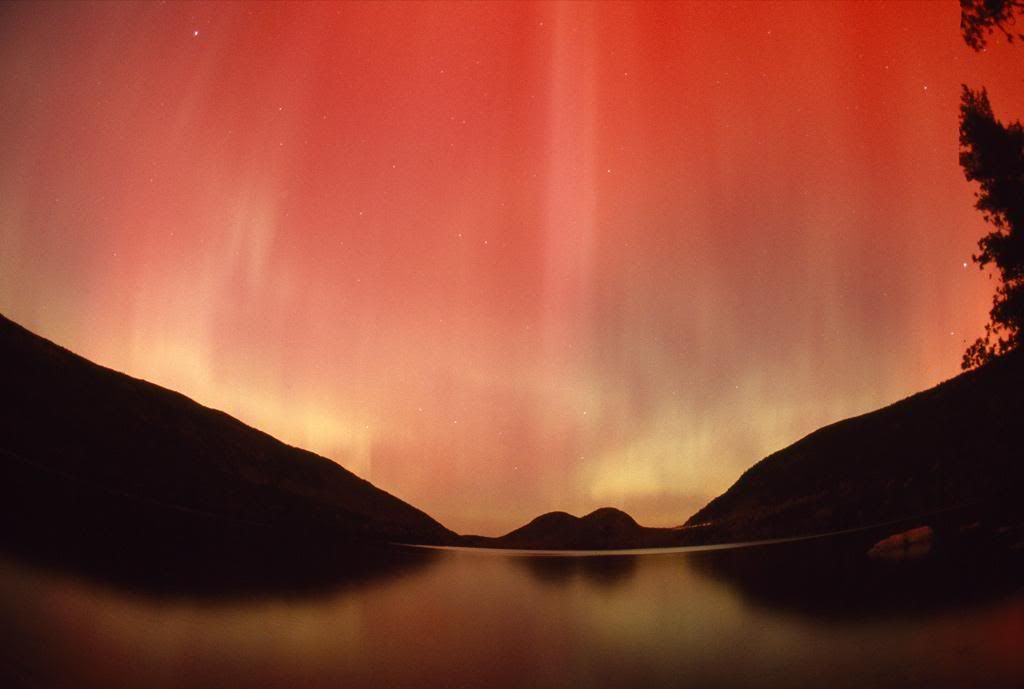
Aurora,also known as Aurora Borealis and Aurorae, are natural light displays in the sky, usually observed at night, particularly in the polar regions. Aurorae seen near the magnetic pole,may be high overhead, but from further away, they illuminate the northern horizon as a greenish glow or sometimes a faint red, as if the sun was rising from an unusual direction.
Aurorae are produced by the collision of charged particles from Earth's magnetosphere, mostly electrons but also protons and heavier particles, with atoms and molecules of Earth's upper atmosphere. The collisions in the atmosphere electrically excite atoms and molecules in the upper atmosphere. This excitation energy can be lost by light emission or collisions.
Most Aurora are green and red emissions from atomic oxygen. Molecular nitrogen and nitrogen ions produce some low level red and very high blue/violet Aurorae. The light blue and green colors are produced by ionic nitrogen and the neutral nitrogen gives off the red and purple color with the rippled edges. Different gases interacting with the upper atmosphere will produce different colors, caused by the different compounds of oxygen and nitrogen. The level of solar wind activity from the Sun can also influence the color of the Aurorae.
Aurorae are produced by the collision of charged particles from Earth's magnetosphere, mostly electrons but also protons and heavier particles, with atoms and molecules of Earth's upper atmosphere. The collisions in the atmosphere electrically excite atoms and molecules in the upper atmosphere. This excitation energy can be lost by light emission or collisions.
Most Aurora are green and red emissions from atomic oxygen. Molecular nitrogen and nitrogen ions produce some low level red and very high blue/violet Aurorae. The light blue and green colors are produced by ionic nitrogen and the neutral nitrogen gives off the red and purple color with the rippled edges. Different gases interacting with the upper atmosphere will produce different colors, caused by the different compounds of oxygen and nitrogen. The level of solar wind activity from the Sun can also influence the color of the Aurorae.



No comments:
Post a Comment